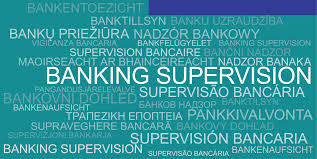How Much Money do I Need to Set Up an Offshore Bank
In this post, I’ll consider how much money you need to set up an offshore bank. This will consider multiple jurisdictions in the Caribbean, which are the traditional offshore banking centers. These are Puerto Rico, St. Vincent, and Dominica.
First, a few comments on why I’ve chosen these jurisdictions. The reason for Puerto Rico is simple enough – this island has been the center of the offshore banking industry since 2015. 95% of the new licenses and acquisitions are in Puerto Puerto Rico, and it’s the only jurisdiction with 40 new applications pending. The bottom line is that Puerto Rico is where all the demand is in 2021 and 2022.
All of this attention on Puerto Rico has meant the demise of other quality jurisdictions such as the Cayman Islands. It’s been a few years since this island has issued a new license and it has lost about 45% of its banks over the last few years. The primary reasons are the high cost of compliance with US FATCA (does not apply in Puerto Rico), costs of CRS (does not apply in Puerto Rico), and the difficulty of finding and maintaining correspondent banking relationships (not a problem in Puerto Rico). For more on this, see The Decline of the Cayman Islands Offshore Banking Empire.
Then there are the “low cost” offshore bank licenses such as Comoros or Gambia. The bottom line with these licenses is that you might get a license, but you won’t be able to do much with it. It’s nearly impossible to open a correspondent account for a low-quality offshore bank license. And, if you do get an account, it will be an EMI in the UK or similar, with high costs and which is very inefficient… it’s not going to function as a bank. For more on this, see Scams in the Offshore Bank License Market.
Finally, we can skip countries like Belize and Nevis who have not issued a new license in years. Yes, these are quality banking jurisdictions, but they are not issuing licenses. So, they don’t make it onto this list of how much money you need to set up an offshore bank.
This leaves us with options such as Dominica and St. Lucia. These are one or two levels below Puerto Rico, but they serve a purpose in the offshore banking industry. If you don’t want to deal with US regulators, you open up shop in St. Lucia. If you can’t afford St. Lucia, you go to Dominica.
Puerto Rico Offshore Bank License Costs
From 2013 to 2016, I was writing articles proclaiming Puerto Rico to be the lowest-cost offshore bank license. That was true then, but not for 2022. For one of these old posts, see Lowest Cost Offshore Bank License is Puerto Rico.
In years gone by, you could spend about $110,000 to get a license that would require only $550,000 in capital… a $300,000 CD, and $250,000 paid-in capital. And, a few years back, applicants were being approved with this amount of capital.
For a new license applicant looking for approval in 2022, the capital required is much higher. You will need at least $2.5m in paid-in capital, plus the same $300,000 CD. Also, the more paid-in capital you have, the better. An applicant with $5 million will be viewed more favorably than one with $2 million… and this is very important in a competitive environment. For more on the capital requirements in Puerto Rico, see Puerto Rico Bank Capital Requirements.
I also suggest that the amount of work that goes into an application for 2022 is much more intense than it was in 2016. Be ready to spend $300,000 to $350,000 to present a solid package to regulators and to complete your necessary background reports.
St. Lucia Offshore Bank License Costs
Below Puerto Rico in terms of the value of the license is St. Lucia. Only those who do not want US oversight or have extensive experience in the offshore space should apply for this license. Of the pure “offshore” banking licenses, St. Lucia is clearly the best option.
The capital required for St. Lucia is $2.2 million paid-in capital, including a $300,000 CD. This CD is held at a local bank on the island and will be used to pay creditors should the bank go under (same as Puerto Rico). For the regulator’s website, click here.
The regulators in St. Lucia are working hard to improve the image of their offshore banking industry. Thus, the application process is quite difficult and fees are high. Expect to spend about the same amount for a license in St. Lucia as you would in Puerto Rico.
There are quality banks in St. Lucia, some of which are very profitable. One of the best operated is Euro Exim Bank. Also, there are subsidiaries of Puerto Rico banks in St. Lucia, such as StateTrust International Bank. For a list of banks, see International Banks Regulated Entities.
Dominica Offshore Bank License Costs
Finally, a step below St. Lucia is Dominica. There are 18 offshore banks licensed in Dominica, most of them are quite small and they are typically specific use banks. For a list see the Financial Authority’s website.
The minimum capital in Dominica is $1 million, which is currently the lowest in the industry (again, I don’t count countries such as Comoros). And, if you’re a qualified applicant with a clean history, you’ll be approved with this amount of paid-in capital.
Of course, the issue is that you’ll need significantly more cash than this to open correspondent accounts. So, your minimum capital required will depend on the requirements from your partner banks. But, again, you’ll be approved with this amount of money, which can be important to someone raising money after the license is issued. See Offshore Bank License Checklist for more information (regulator’s website).
Conclusion
While Puerto Rico is the market leader, there are sold business cases where St. Lucia or Dominica makes sense. For more information, and for a quote to set up a bank in one of these countries, please contact me at info@premieroffshore.com.





